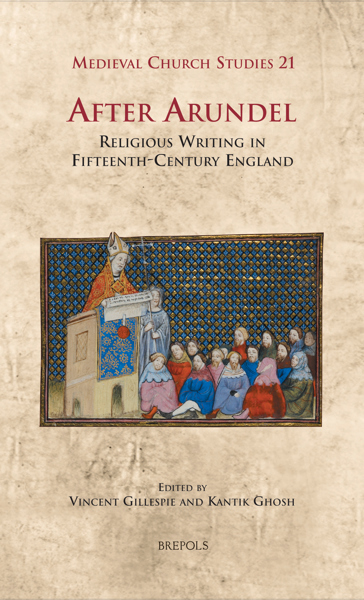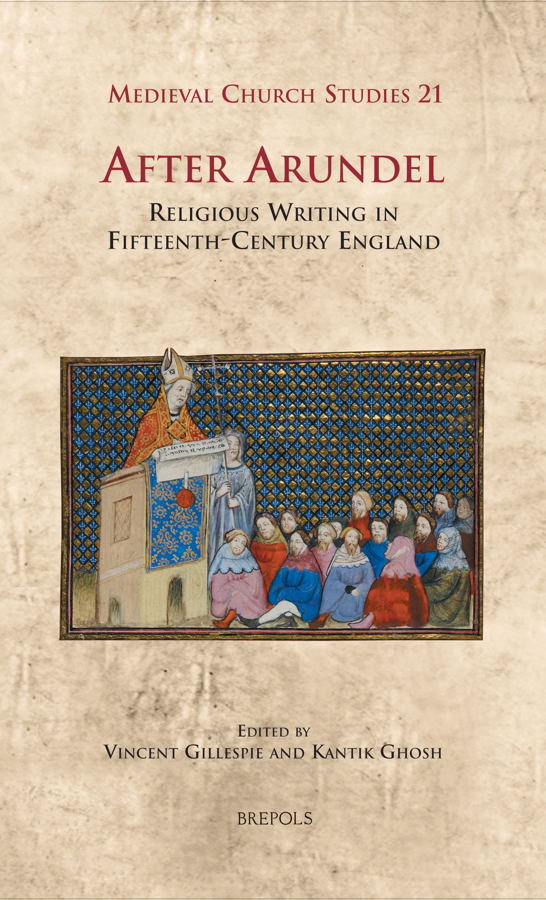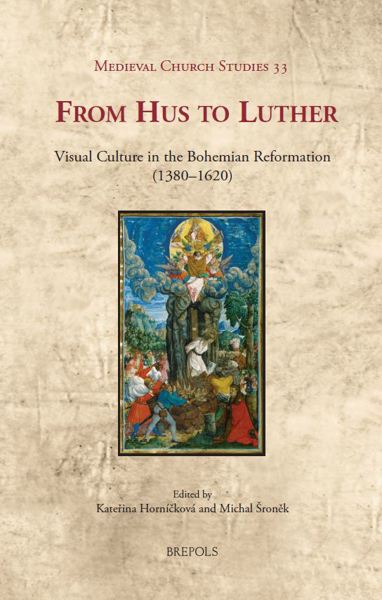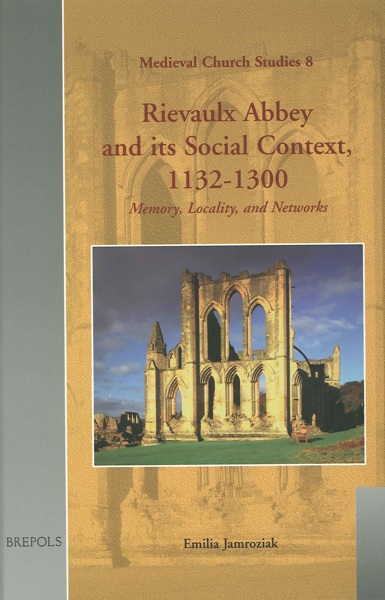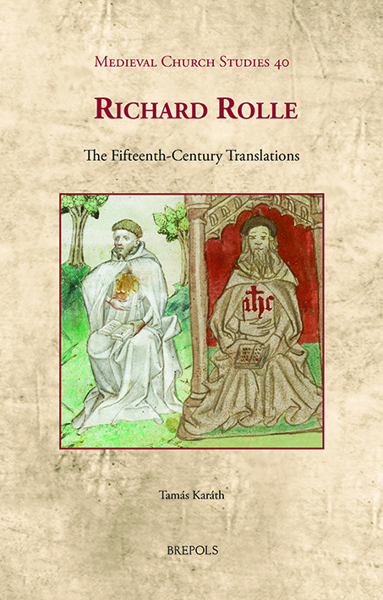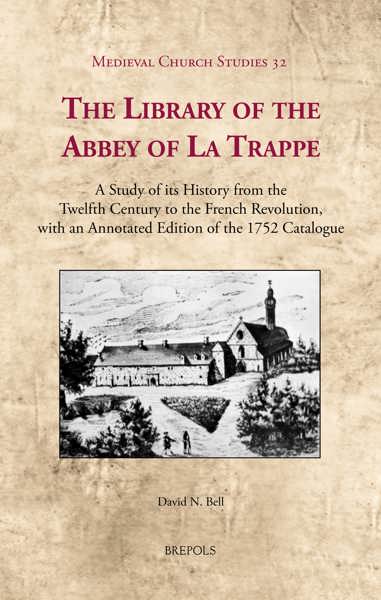
- Pages: xix + 657 p.
- Size:156 x 234 mm
- Illustrations:3 b/w
- Language(s):English, French, Latin
- Publication Year:2012
- € 160,00 EXCL. VAT RETAIL PRICE
- ISBN: 978-2-503-53402-2
- Hardback
- Available
- € 160,00 EXCL. VAT RETAIL PRICE
- ISBN: 978-2-503-54254-6
- E-book
- Available
"The volume will probably not be the last word on this issue, but the range and the quality of its scholarship makes an important and welcome contribution to it. It also shows, incidentally, that fifteenth- century English religious literature, certainly in its sociological aspects, has emerged from the shadows in which literary and social studies had kept it for a long time." (Siegfried Wenzel, in The Catholic Historical Review, January 2013, Vol. 99, N° 1, p. 138-139)
"(...) in After Arundel we have a vigorous companion to fifteenth-century English religious writing. Drawing on the multidisciplinary insights of thirty scholarly experts, this collection demonstrates how the spiritual energy of fifteenth-century England found literary expression both with the endorsement and in spite of the mandates of the English episcopacy." (Michael P. Kuczynski, in: Speculum, 90/1, January 2015, p. 255-256)
England’s religious life in the fifteenth century is worthy of sustained, nuanced, and meticulous analysis. This book offers a portrait of late medieval English religious theory and praxis that complicates any attempt to present the period as either quivering in the post-traumatic stress of Lollardy, or basking in the autumn sunshine of an uncritical and self-satisfied hierarchy’s failure to engage with undoubted European and domestic crises in ecclesiology, pastoral theology, anti-clericalism, and lay spiritual emancipation. After Arundel means not just because of or despite Archbishop Arundel (and the repressive legislation associated with him), for it also asks what models and taxonomies will be needed to move beyond Arundel as a fixed star in the firmament of (especially literary) scholarship in the period. It aims to supply the next phase of scholarly exploration of this still often dark continent of religious attitudes and writing with new tools and technical vocabularies, as well as to suggest new directions of travel.
Foreword
List of Contributors
Part I. Opening Salvoes
Chichele’s Church: Vernacular Theology in England after Thomas Arundel - VINCENT GILLESPIE
After Arundel: The Closing or the Opening of the English Mind? - JEREMY CATTO
Censorship or Cultural Change? Reformation and Renaissance in the Spirituality of Late Medieval England - MICHAEL G. SARGENT
Vernacular Theology / Theological Vernacular: A Game of Two Halves? - IAN JOHNSON
Part II. Discerning the Discourse: Language, Image, and Spirituality
Orthodoxy’s Image Trouble: Images in and after Arundel’s Constitutions - JAMES SIMPSON
Censorship and Cultural Continuity: Love’s Mirror, the Pore Caitif, and Religious Experience before and after Arundel - CHRISTOPHER G. BRADLEY
Voice after Arundel - DAVID LAWTON
Part III. The Dynamics of Orthodox Reform
Conciliarism and Heresy in England - ALEXANDER RUSSELL
‘Let Them Praise Him in Church’: Orthodox Reform at Salisbury Cathedral in the First Half of the Fifteenth Century’ - DAVID LEPINE
London after Arundel: Learned Rectors and the Strategies of Orthodox Reform - SHEILA LINDENBAUM
Common Libraries in Fifteenth-Century England: An Episcopal Benefaction - JAMES WILLOUGHBY
Part IV. Ecclesiastical Humanism
Religion, Humanism, and Humanity: Chaundler’s Dialogues and the Winchester Secretum - DANIEL WAKELIN
Staging Advice in Oxford, New College, MS 288: On Thomas Chaundler and Thomas Bekynton - ANDREW COLE
Part V. Reginald Pecock
Reconstructing the Mixed Life in Reginald Pecock’s Reule of Crysten Religioun - ALLAN F. WESTPHALL
Vernacular Authority and the Rhetoric of Sciences in Pecock’s The Folewer to the Donet and in The Court of Sapience - TAMÁS KARÁTH
Part VI. Literary Self-Consciousness and Literary History
‘This holy tyme’: Present Sense in the Digby Lyrics - HELEN BARR
English Devotions for a Noble Household: The Long Passion in Audelay’s Counsel of Conscience - SUSANNA FEIN
Lydgate’s Retraction and ‘his resorte to his religyoun’ - W. H. E. SWEET
Part VII. The Codex as an Instrument of Reform
Devotional Cosmopolitanism in Fifteenth-Century England - STEPHEN KELLY AND RYAN PERRY
Canons and Catechisms: The Austin Canons of South-East England and Sacerdos parochialis - NIAMH PATTWELL
‘Þat þine opun dedis be a trewe book’: Reading around Arundel’s Constitutions - AMANDA MOSS
Part VIII. Translation
Gender, Confession, and Authority: Oxford, Bodleian Library, MS Douce 114 in the Fifteenth Century - JENNIFER BROWN
Dressing up a ‘galaunt’: Traditional Piety and Fashionable Politics in Peter Idley’s ‘translacions’ of Mannyng and Lydgate - MATTHEW GIANCARLO
Richard Methley and the Translation of Vernacular Religious Writing into Latin - LAURA SAETVEIT MILES
Part IX. Acting Holy
Saints’ Lives and the Literary after Arundel - CATHERINE SANOK
Hagiography after Arundel: Expounding the Trinity - KAREN WINSTEAD
Proliferation and Purification: The Use of Books for Nuns after Arundel - C. ANNETTE GRISÉ
Part X. From Script to Print
After Arundel but before Luther: The First Half-Century of Print - SUSAN POWELL
Part XI. Closing Reflections and Responses
Wyclif, Arundel, and the Long Fifteenth Century - KANTIK GHOSH
‘A clerke schulde have it of kinde for to kepe counsell’ - NICHOLAS WATSON
Bibliography
Index Nominum
Index of Manuscripts
